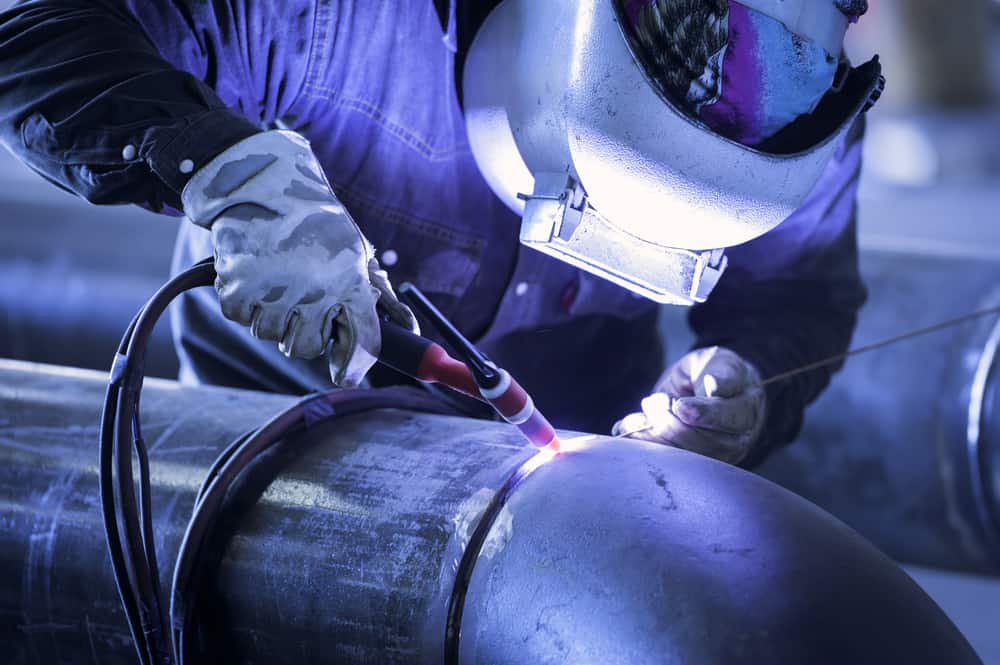Inspecting Dissimilar Metal Welds Using NDT

Welding dissimilar metals allows asset owners to leverage unique properties within each metal to contribute to the final strength and durability of a component. A common example of this is the process of cladding the interior of steel pipes with corrosion-resistant alloys (CRA) which gives the pipe system the strength of steel while adding corrosion resistive properties to it from the CRA to increase its durability. However, as great a solution as it may present, there are many challenges associated with the welding of dissimilar metals, mostly due to the difference in metallurgical properties.
The properties and compositions of metals react differently when subjected to thermal stress. The resulting weld can be susceptible to various kinds of flaws. In ensuring the quality and standards of the weld, non-destructive testing (NDT) plays a crucial role.
Challenges With Dissimilar Metal Welding
The different properties within dissimilar metals often cause problems in the formation of quality fusion. The major problems encountered are differing metallurgical properties, different grain sizes and alignment, and varying acoustic properties, among other characteristics. With these issues on the forefront, the joint resulting from these welds can have the following issues:
- Lack of fusion resulting from the different coefficients of thermal expansion of the weld and base metal
- Inclusions resulting from the different reactions of the metals when exposed to heat depending upon their chemical composition
- Porosity due to the presence of inclusions
- Surface cracking in either layer of the metal during the expansion and contraction resulting from the heat exposure during the weld
These flaws can severely affect the strength of the final component reducing the value of the need for a dissimilar metal weld in the first place. The issue can be resolved with the use of proper NDT technology which can identify weld flaws before the components are placed in service. With early flaw detection, it is possible to identify the best remedy and ensure weld standards are met.
NDT Solutions Ensure Dissimilar Metal Weld Quality
Dissimilar metal welds are mostly used in oil and gas and nuclear industries where the integrity of the structural component is crucial. Inspection of the dissimilar metal weld is thus important for such industries in ensuring quality, productivity, and safe operation. Ultrasonic testing (UT) has been used for the inspection of such welds to identify potential flaws.
The propagation of ultrasonic waves to such welded surfaces can be used to identify flaws such as cracks, corrosion, pores, and inclusions through examination of the reflected pulse. Phased array ultrasonic testing (PAUT) further provides the ability to focus the beams. The data and high-resolution image obtained can be identified and analyzed to ensure the location and sizing of the flaw. Yet these types of flaws can be hard to identify or detect, even with phased array UT.
Advanced phased array UT instruments, dual (2D) matrix array probes, along with powerful and intuitive software can play a crucial role in flaw detection confidence. This can ultimately help with uptime, code compliance, and safety.
NDT Inspection Verifies Weld Specification for Industries
Industries like petroleum and nuclear demand high-quality components to ensure the safety and criticality of their applications. The many challenges related to dissimilar metal welds can create conflict for such industries to maintain their standard. Through NDT inspection, it is easier to ensure that dissimilar metal welds meet their specification. The ability to identify flaws, pre-service, provides industries the opportunity to carry out repairs or adopt other options in favor of operational safety. With NDT, the setup and operation of components can become more efficient, safer, and economical.
Zetec is a global leader in non-destructive testing (NDT) solutions for the critical inspection needs of industries. Our ultrasonic NDT technologies help clients ensure accuracy and precision during dissimilar metal weld inspection. Pre-service flaw detection allows industries to mitigate risk and maintain quality and productivity. Contact us today to learn how we can deliver solutions to optimize productivity, safety, and total cost of ownership.

Zetec’s designers are industry-leading experts in ultrasonic and eddy current technologies, and we can help you navigate any of our NDT testing solutions or devices.
